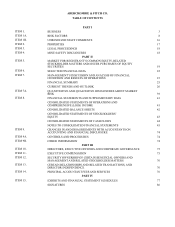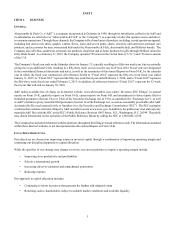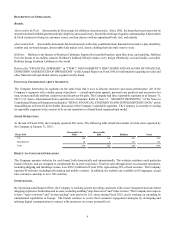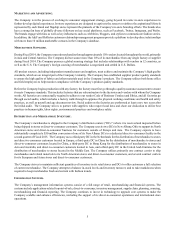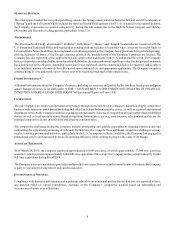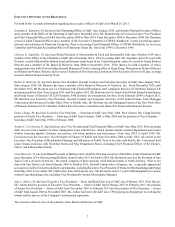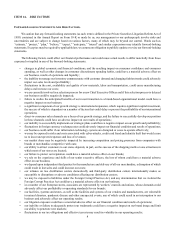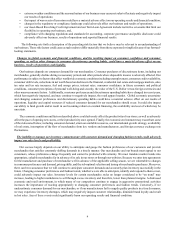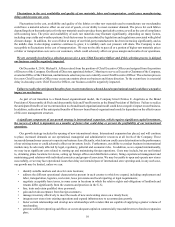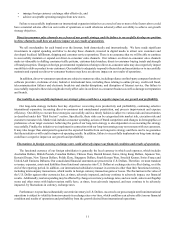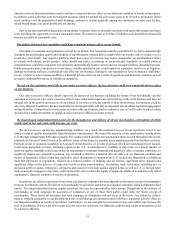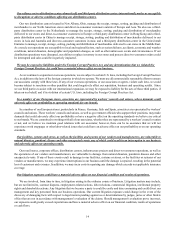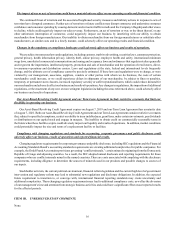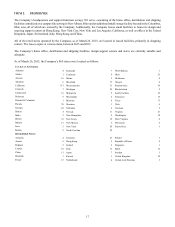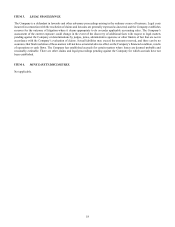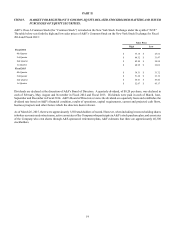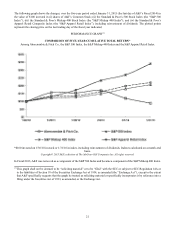Abercrombie & Fitch 2014 Annual Report Download - page 12
Download and view the complete annual report
Please find page 12 of the 2014 Abercrombie & Fitch annual report below. You can navigate through the pages in the report by either clicking on the pages listed below, or by using the keyword search tool below to find specific information within the annual report.
12
Our business could suffer if our information technology systems are disrupted or cease to operate effectively.
We rely heavily on our information technology systems to operate our websites; record and process transactions; respond to
customer inquiries; manage inventory; purchase, sell and ship merchandise on a timely basis; and maintain cost-efficient operations.
Given the significant number of transactions that are completed annually, it is vital to maintain constant operation of our computer
hardware and software systems and maintain cyber security. Despite efforts to prevent such an occurrence, our information
technology systems may be vulnerable from time to time to damage or interruption from computer viruses, power outages, third-
party intrusions and other technical malfunctions. If our systems are damaged, or fail to function properly, we may have to make
monetary investments to repair or replace the systems, and we could endure delays in our operations.
While we regularly evaluate our information technology systems and requirements, we are aware of the inherent risks associated
with replacing and modifying these systems, including inaccurate system information, system disruptions and user acceptance
and understanding. Any material disruption or slowdown of our systems, including a disruption or slowdown caused by our failure
to successfully upgrade our systems, could cause information, including data related to customer orders, to be lost or delayed.
Such a loss or delay, especially if the disruption or slowdown occurred during our peak selling seasons, could have a material
adverse effect on our results of operations.
We may be exposed to risks and costs associated with cyber-attacks, credit card fraud and identity theft that would cause us
to incur unexpected expenses and loss of revenues.
In the standard course of business, we process customer information, including payment information, through our stores and
direct-to-consumer programs. There is an increased concern over the security of personal information transmitted over the Internet,
consumer identity theft and user privacy. We endeavor to protect consumer identity and payment information through the
implementation of security technologies, processes and procedures. It is possible that an individual or group could defeat our
security measures and access sensitive customer and associate information. Actual or anticipated cyber-attacks may cause us to
incur increasing costs, including costs to deploy additional personnel and protective technologies, train employees, and engage
third-party experts and consultants. Exposure of customer data through any means could materially harm A&F by, but not limited
to, reputation loss, regulatory fines and penalties, legal liability and costs of litigation.
Our market share may be negatively impacted by increasing competition and pricing pressures from companies with brands
or merchandise competitive with ours.
The sale of apparel and personal care products through stores and direct-to-consumer channels is a highly competitive business
with numerous participants, including individual and chain fashion specialty stores, as well as regional, national and international
department stores. The substantial sales growth in the direct-to-consumer channel within the last few years has encouraged the
entry of many new competitors and an increase in competition from established companies. We face a variety of competitive
challenges, including:
• anticipating and quickly responding to changing consumer demands or preferences better than our competitors;
• maintaining favorable brand recognition and effectively marketing our products to consumers in several diverse
demographic markets;
• sourcing merchandise efficiently;
• developing innovative, high-quality merchandise in styles that appeal to our consumers and in ways that favorably
distinguish us from our competitors; and
• countering the aggressive pricing and promotional activities of many of our competitors without diminishing the aspirational
nature of our brands and brand equity.
In light of the competitive challenges we face, we may not be able to compete successfully in the future. Further, increases
in competition could reduce our sales and harm our operating results and business.
Our ability to attract customers to our stores depends, in part, on the success of the shopping malls or area attractions in
which most of our stores are located.
In order to generate customer traffic, we locate many of our stores in prominent locations within successful shopping malls
or street locations. Our stores benefit from the ability of the malls’ “anchor” tenants, generally large department stores and other
area attractions, to generate consumer traffic in the vicinity of our stores. We cannot control the loss of an anchor or other significant
tenant in a shopping mall in which we have a store; the development of new shopping malls in the U.S. or around the world; the
availability or cost of appropriate locations; competition with other retailers for prominent locations; or the success of individual
shopping malls. All of these factors may impact our ability to meet our productivity targets for our domestic stores and our growth


